Introduction:
Hello my friends, I’m back with another keyset review for you. Today we’ll be taking a look at DCX Cyber, a striking Cherry-like ABS keyset from Drop; in good company being inspired by the aesthetic of cyberpunk.
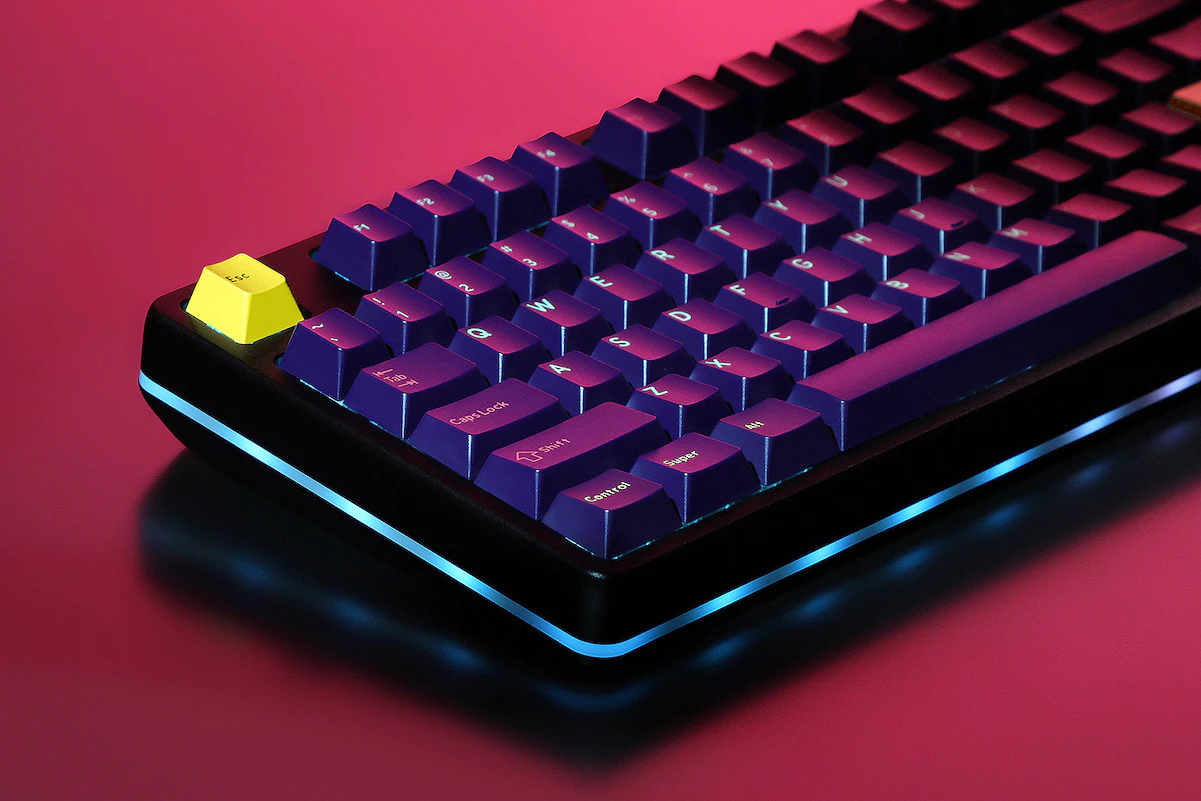
This rad photo is from the DCX Cyber product page.
Cyber is my first Drop Cylindrical X set, so this review will also cover the profile itself, taking into account lots of existing customer feedback. This one’s un-sponsored; I bought the set for myself and have been using it for a few weeks. Let’s dig in!
TL;DR: They look good, they feel good, they fit properly; these are solid keycaps and this colorway is rad. I’d say these are closer to a 9/10 than a 4/5, but not quite a 10. If you’re a details person, read on.
Here’s my set on a purple Portico, sitting on a Bob Ross deskmat:
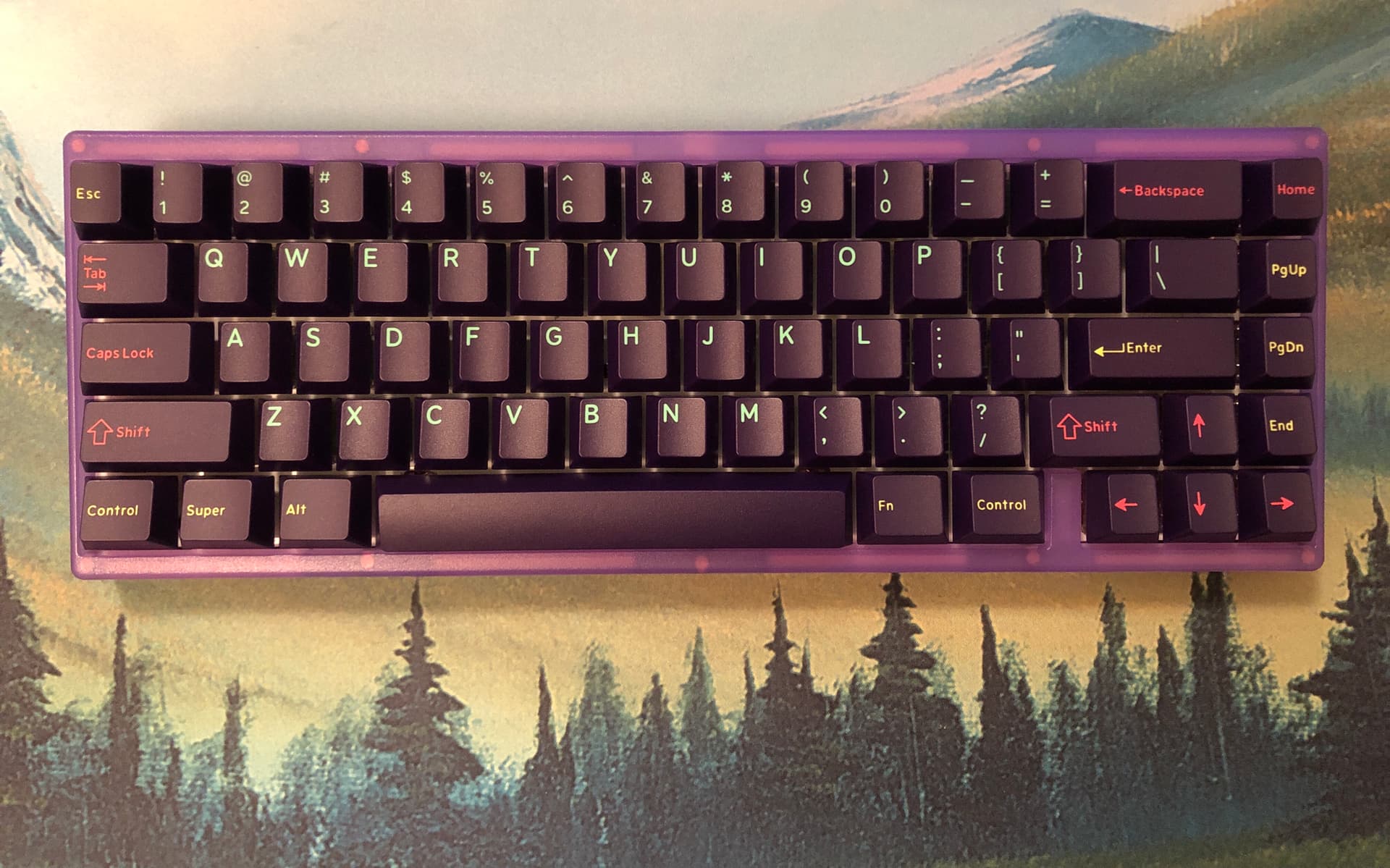
Mm. Dat purple.
As a footnote, DCX wasn’t always called DCX, and there was a momentary kerfuffle about it. If you find that sort of thing interesting, I have most of my thoughts about it here.
Let’s talk about Cyber.
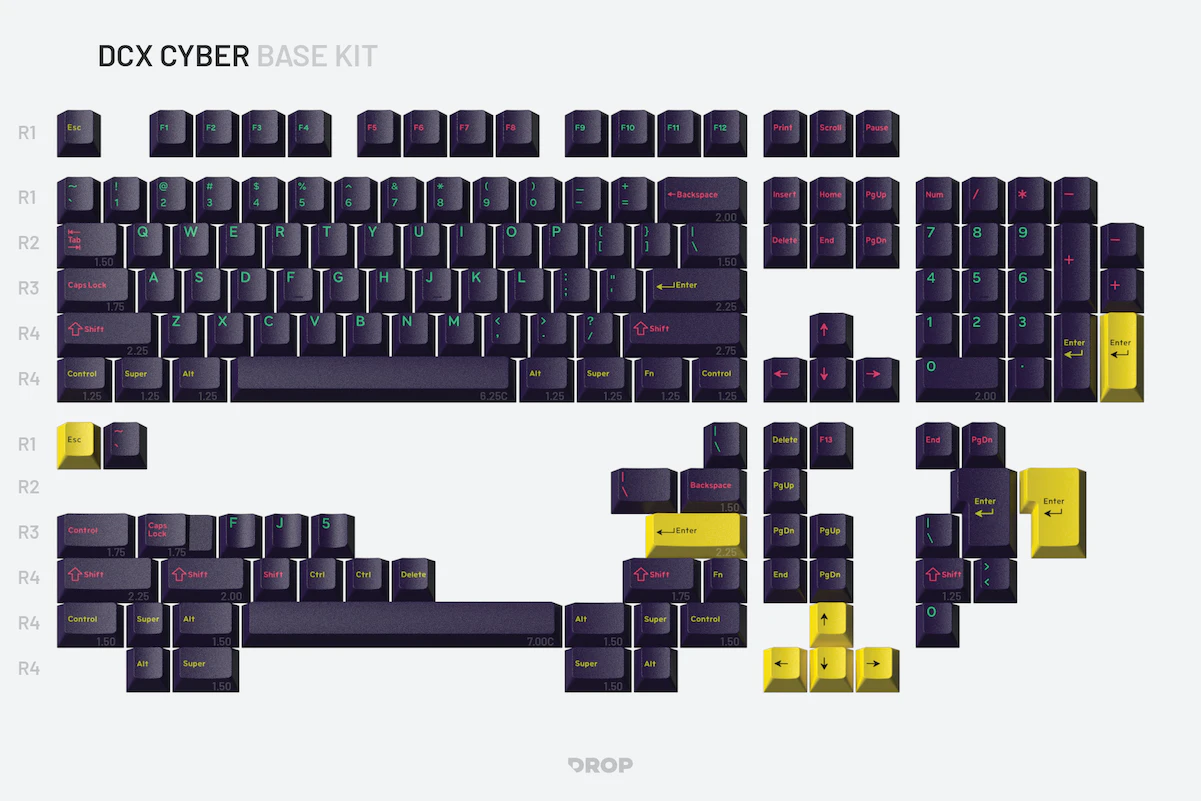
Kit image from Drop’s website; for R1 there’s only this base kit, but I think it does have at least a respectable amount of coverage and some nice accent options.
This colorway in particular is rich and striking, and I think it looks fantastic on a board. As a point of novelty, the distribution of the colors is not identical to its MT3 counterpart – this set is a thoughtful re-interpretation of the colorway in context of DCX rather than a straight key-for-key port. I think it works really well.
Quality and material feel is on-par with the ABS MT3 sets, coming from the same manufacturer. That is, generally exceptional quality with rare lapses in quality-control, accounted-for with a customer-friendly return policy. Maybe not perfect, but I don’t think a patient customer can possibly loose-out here.

Pretty darn reasonable, if you ask me. If you’d like the details, you can find them here.
These are ABS and everything that entails, so if you’re not down with shine over time, stick with pure PBT – it’s just the nature of that type of plastic. While they will shine, just like any reasonably thick ABS set they won’t wear-out… unless, I dunno, you have the most caustic hand oils in the world and type 24/7 for literal years.
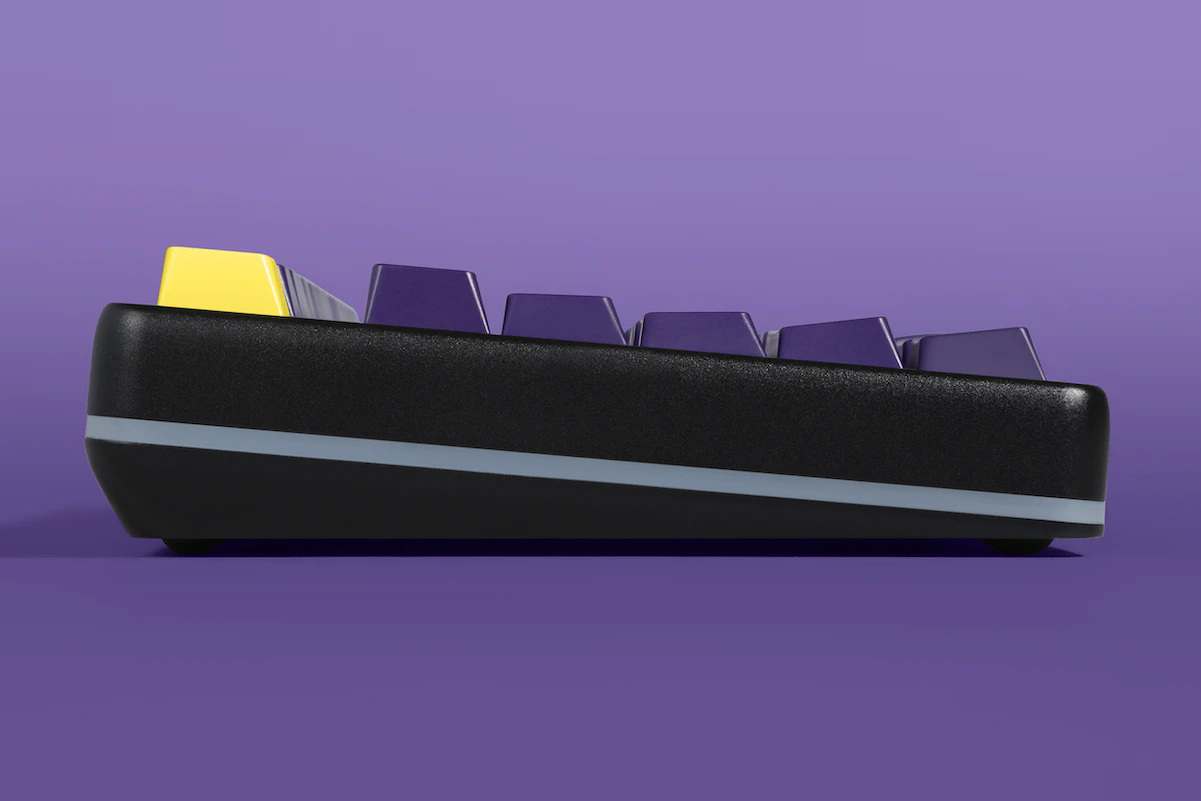
One more image from the product page, showing a side view of the DCX profile rows.
In terms of the profile, it took me just a little bit to get fully acclimated coming straight from Cherry, but it’s plenty familiar and approachable. By that I mean I had zero problems, vanishingly-little awkwardness, and it took a few hours over a couple days to get back up to my average WPM after moving to the profile. From there it’s been feeling completely natural to me. DCX is genuinely distinct from Cherry, but probably the closest thing to it that isn’t a clone of the profile at this point. From what I understand about the design goals here, this is basically a perfect success. Noice. For me, this profile is a welcome alternative to existing options, offering its own distinctions while largely maintaining established conventions, and this is probably the most fun colorway it comes in right now.
A few notes about the tooling: Drop went out of their way to address a pain-point present on many popular high-end keycaps: visible sprue marks. If you’re a flipped-space enjoyer like myself, you might be familiar with GMK’s unsightly blemishes on the “back” of the bar, and for that matter most other keys like the F-row. Not here – injection marks are under the caps and not visible from any normal viewing angle. I appreciate this every time I see it, and seeing it on a premium keyset makes me even happier.
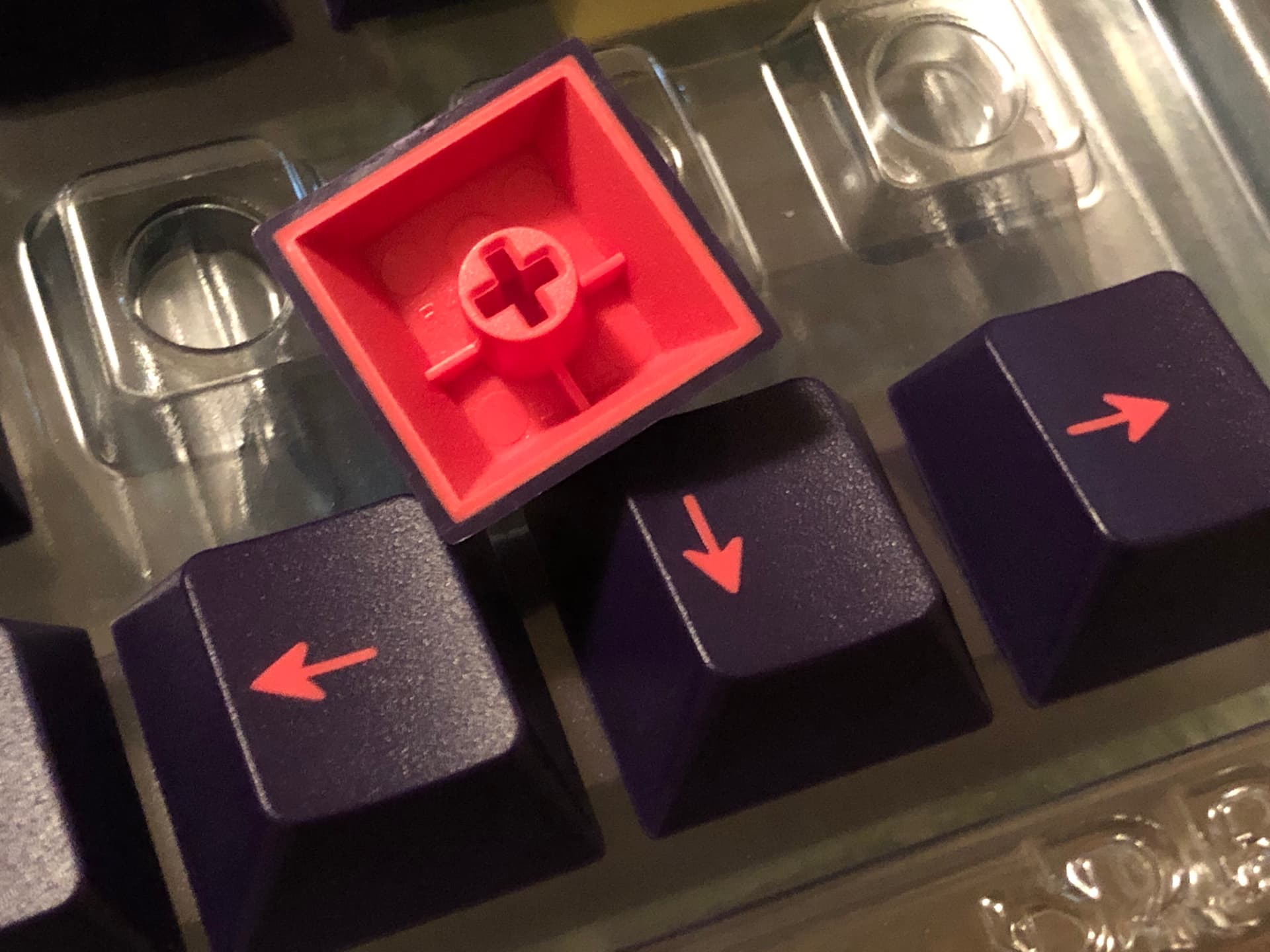
A close look at both sides of the DCX arrow keys.
Legends are generally crisp and reasonably uniform. I haven’t found any blemishes on my own set, but at least one user has posted photos of color-bleed from one shot to the other. I get the impression this is a rare occurrence, but it’s documented, so I’m mentioning it. The typeface is thinner than Cherry’s, but shares the familiar and timeless rotary-machine-tool quality of rounded corners. I’ve seen mixed feelings about the kerning (distance between letters) on the Shift keys, and this comes down to different schools of thought when it comes to how to approach kerning: visual weight vs absolute distance vs bounding box.
That is, you can space letters taking into account how natural it will look, but not necessarily adhering to uniform spacing. Alternatively, you can space letters with an exact uniform distance between the actual boundaries of each letter – this tends to be more of a good place to start and then adjust for visual weight. Finally, you can evenly space letters based on the boundaries of an imaginary box drawn to touch the extremities on all sides. This is a pretty traditional way to do it in context of letter-press typesetting and machine tooling, but it often creates awkward-looking relationships between some letters, especially lower-case ones.
To me, this looks like traditional mono-spaced, machine-tooled lettering – there *is* a logic to the spacing, but it does also naturally strike plenty of people as a little derpy depending on the letters being used. See “Shift” key below:
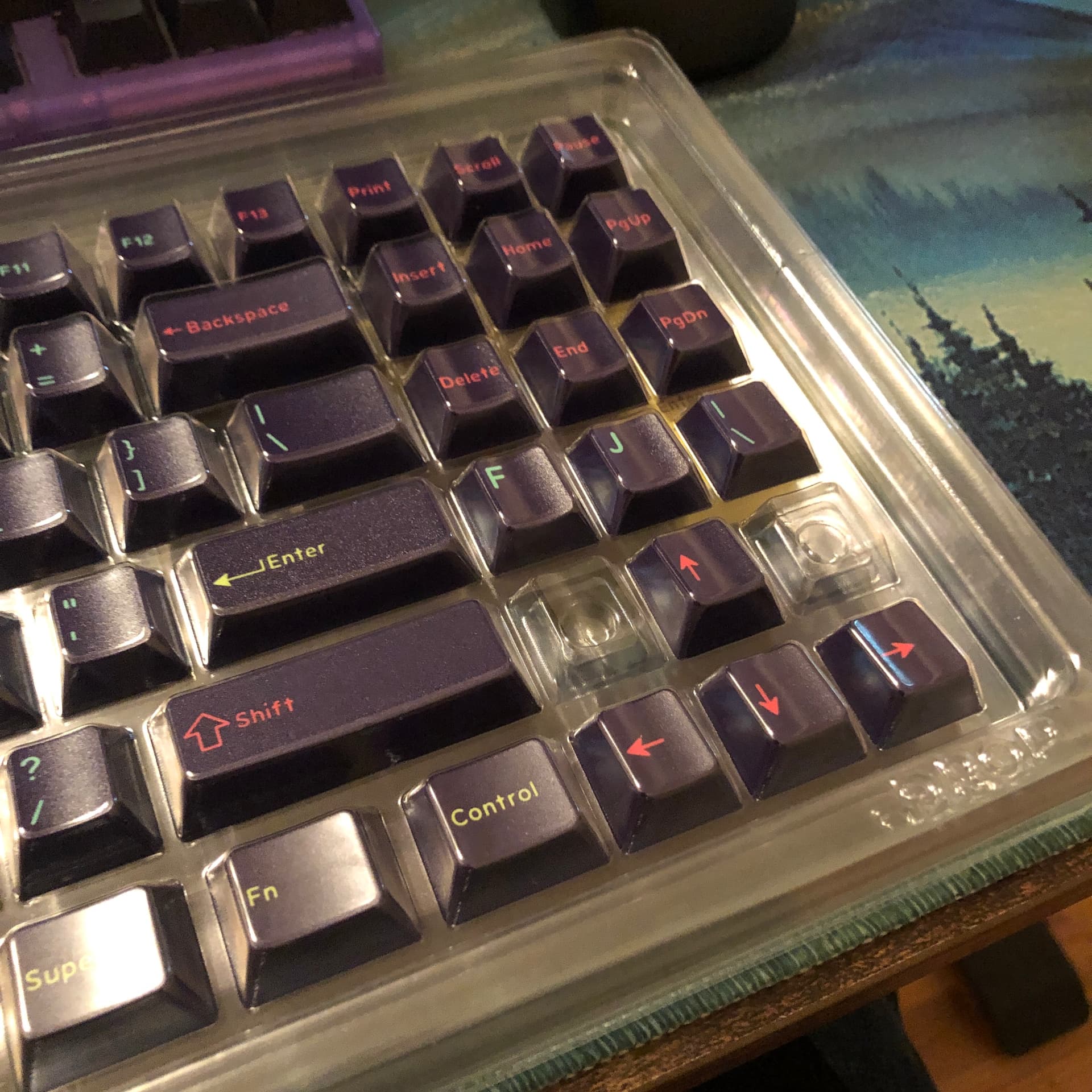
The nested plastic trays that DCX ships in.
The packaging is very good, if a little understated on the outside for such a loud colorway. Inside the black-on-black cardboard box are a series of nested trays that hold each individual cap in-place; no scratches or gouges from sliding in troughs or bouncing in bags. The cardboard part is good physically speaking, like 7 or 8/10 for that sort of thing, but the plastic part inside (IMO the important part) is 10/10, excellent, industry-leading, heck-yeah, everybody-else-take-notes kind of good.
Well – MelGeek’s MCR keycaps actually come in pretty much equivalent excellent packaging – but all the other major manufacturers I’ve gotten caps from are behind when it comes to the trays that sets come in and/or the space they take up. Per-key trays are nothing new, but those have traditionally been big, flat blister packs that stink to store – these neatly stack and fit in a nice small box. Perfect. (As an aside I’d love if MT3 moved to something like this; I like not having the shreddy paperboard while also reliably protecting the caps.)
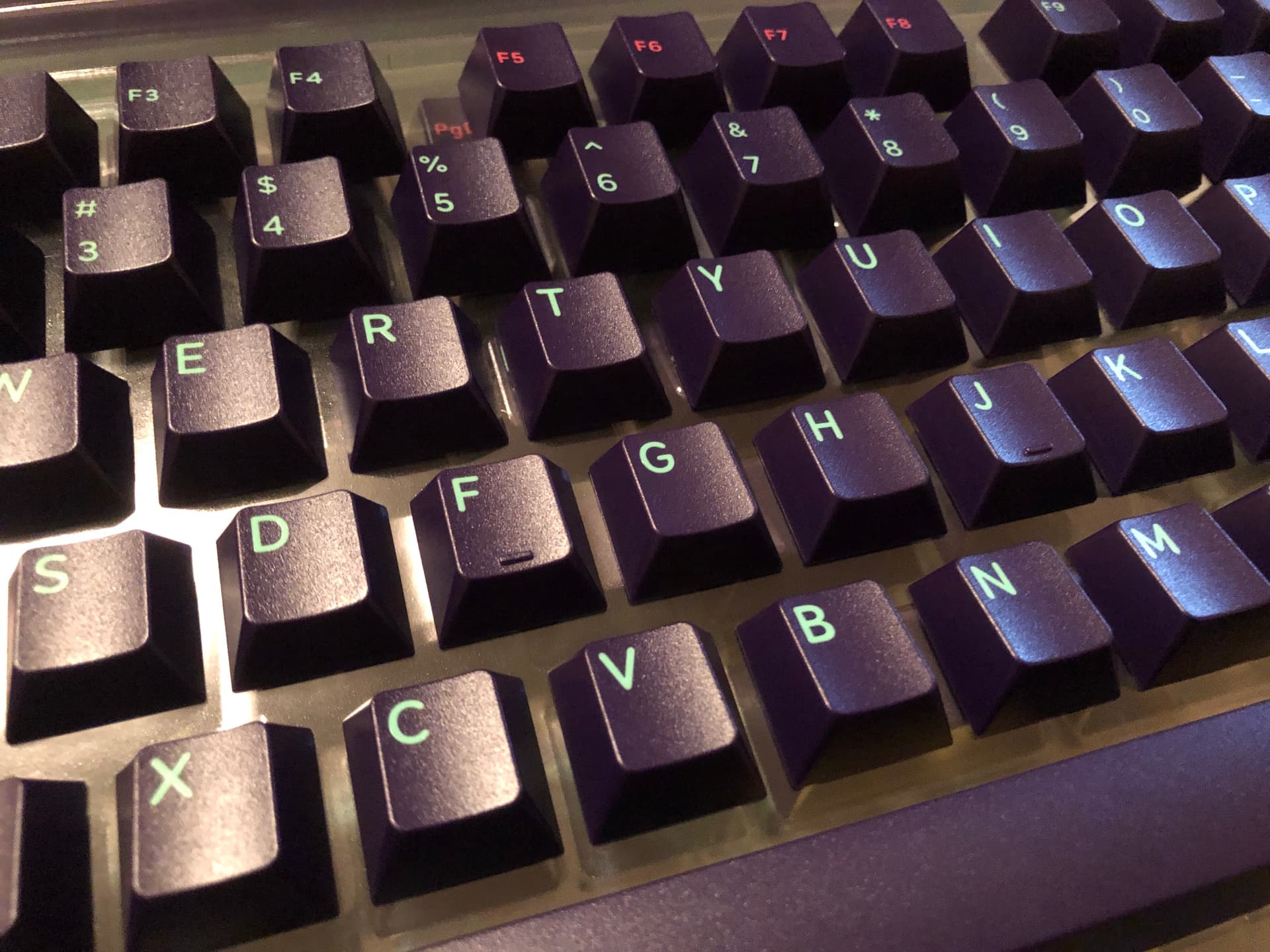
A fairly close look at DCX Cyber, sitting in its packaging tray.
Truly minor nitpick; there’s a hint of inconsistency with some of the color. I’m not sure if that comes down to surface, pigment, the color of the other shot being underneath the whole cap, something else entirely, or some combination, but it’s there. — I should put an *asterisk on this; I’m literally trained to spot this sort of thing and work in a field where it’s important. In my experience most people will probably not perceive a difference like this, I’m just mentioning it for the few folks it may actually matter to. I can see it, but this set is just so fun to look at that I don’t care at all – but a specifically obsessed person (or the rare tetrachromat) might appreciate more rigid consistency. FWIW I think the consistency here is notably better than at least one of the top / most well-known keycap manufacturers; it’s quite good.
To wrap this all up, I think Drop and Terra Plastics have done a fantastic job developing this profile, and I think MiTo has done an excellent job with the colorway and its composition. This really is a killer set, fitting a rad name like DCX Cyber.
Now… I just need to find the perfect yellow keyboard.

